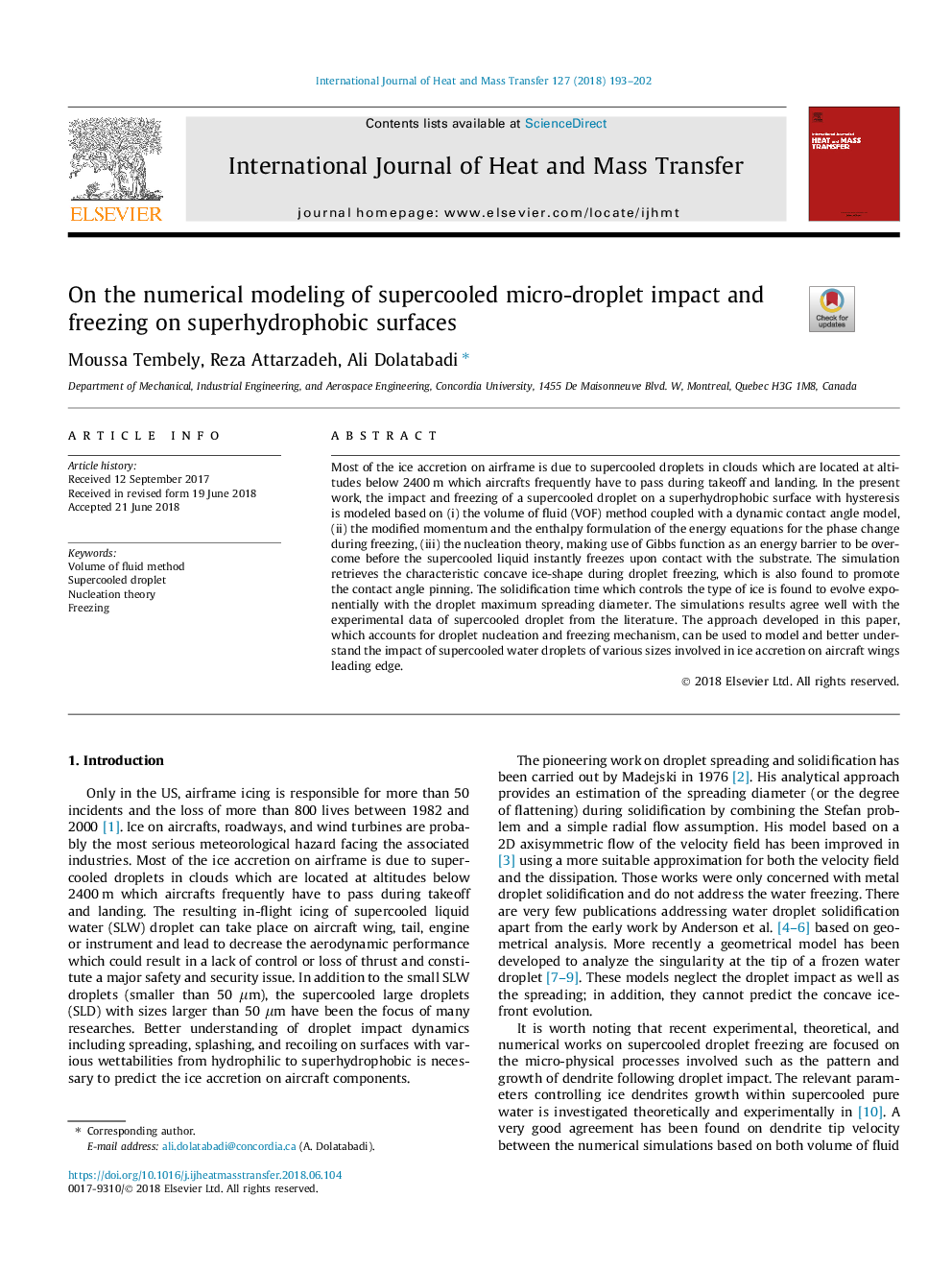| Article ID | Journal | Published Year | Pages | File Type |
|---|---|---|---|---|
| 7053765 | International Journal of Heat and Mass Transfer | 2018 | 10 Pages |
Abstract
Most of the ice accretion on airframe is due to supercooled droplets in clouds which are located at altitudes below 2400â¯m which aircrafts frequently have to pass during takeoff and landing. In the present work, the impact and freezing of a supercooled droplet on a superhydrophobic surface with hysteresis is modeled based on (i) the volume of fluid (VOF) method coupled with a dynamic contact angle model, (ii) the modified momentum and the enthalpy formulation of the energy equations for the phase change during freezing, (iii) the nucleation theory, making use of Gibbs function as an energy barrier to be overcome before the supercooled liquid instantly freezes upon contact with the substrate. The simulation retrieves the characteristic concave ice-shape during droplet freezing, which is also found to promote the contact angle pinning. The solidification time which controls the type of ice is found to evolve exponentially with the droplet maximum spreading diameter. The simulations results agree well with the experimental data of supercooled droplet from the literature. The approach developed in this paper, which accounts for droplet nucleation and freezing mechanism, can be used to model and better understand the impact of supercooled water droplets of various sizes involved in ice accretion on aircraft wings leading edge.
Related Topics
Physical Sciences and Engineering
Chemical Engineering
Fluid Flow and Transfer Processes
Authors
Moussa Tembely, Reza Attarzadeh, Ali Dolatabadi,
